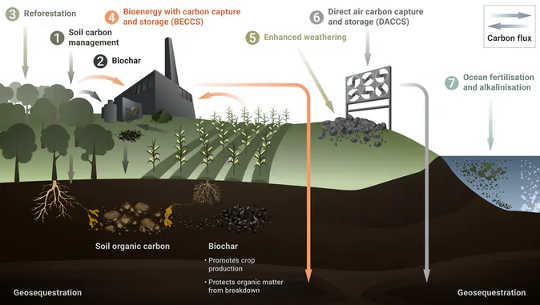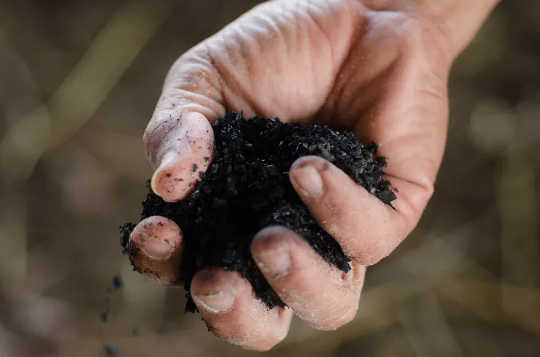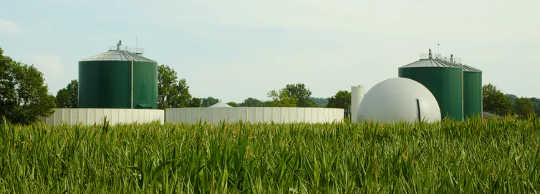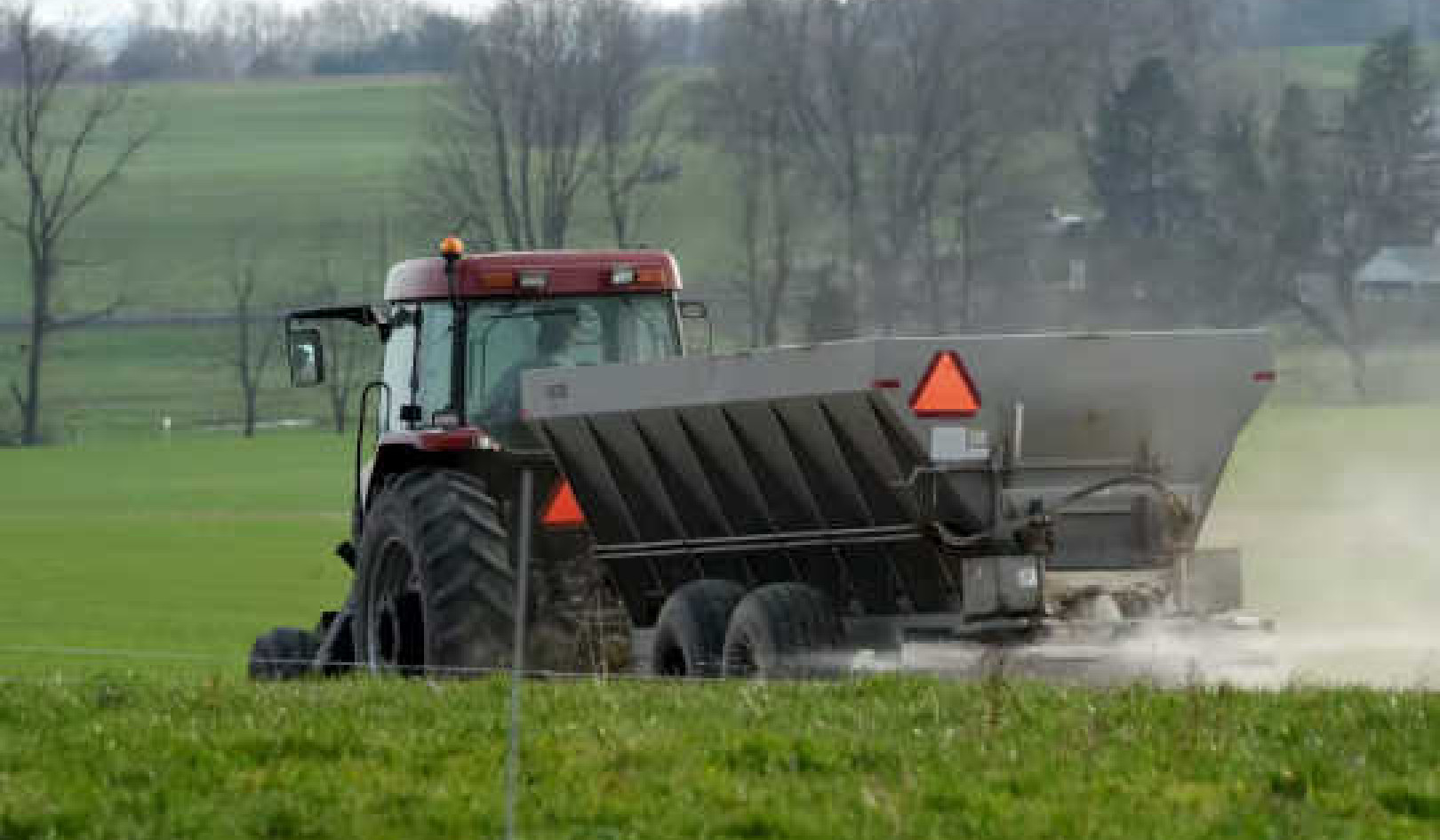 Shutterstock
Shutterstock
Australian Federal Energy Minister Angus Taylor is on Tuesday. September 22, 2020 expected to outline the Morrison government’s first Low Emissions Technology Statement, plotting Australia’s way forward on climate action. It’s likely to include “negative emissions” technologies, which remove carbon dioxide (CO?) from the air.
The Intergovernmental Panel on Climate Change says negative emissions technologies will be needed to meet the Paris Agreement goal of limiting warming to well below 2?. In other words, just cutting emissions is not enough – we must also take existing greenhouse gases from the air.
Last week, the government broadened the remit of the Australian Renewable Energy Agency (ARENA) and the Clean Energy Finance Corporation (CEFC). It flagged negative emissions technologies, such as soil carbon, as one avenue for investment.
Some negative emissions ventures are operating in Australia at a small scale, including carbon capture, reforestation and soil carbon management. Here, we examine seven ways to remove CO? from the atmosphere, including their pros and cons.
 Graphic showing seven negative emissions technologies. Anders Claassens
Graphic showing seven negative emissions technologies. Anders Claassens
1. Managing soil carbon
Up to 150 billion tonnes of soil carbon has been lost globally since farming began to replace natural forests and grasslands. Improved land management could store or “sequester” up to nine billion tonnes of CO? each year. It could also improve soil health.
Soil carbon can be built through methods such as:
- “no-till” farming, using techniques that don’t disturb soil
- planting cover crops, which protect soil between normal cropping periods
- grazing livestock on perennial pastures, which last longer than annual plants
- applying lime to encourage plant growth
- using compost and manure.
It’s important to remember though, that carbon can be hard to store in soils for long periods. This is because microbes consume organic matter, which releases carbon back to the atmosphere.
2. Biochar
Biochar is a charcoal-like material produced from organic matter such as green waste or straw. It is added to soil to boost carbon stores, by promoting microbial activity and aggregation (soil clumps) which prevents organic plant matter breaking down and releasing carbon.
Biochar has been used by indigenous people in the Amazon to increase food production. More than 14,000 biochar studies have been published since 2005. This includes work by Australian researchers showing how biochar reacts with soil minerals, microbes and plants to improve soil and stimulate plant growth.
On average, biochar increases crop yields by about 16% and halves emissions of nitrous oxide, a potent greenhouse gas. The production of biochar releases gases that can generate renewable heat and electricity. Research suggests that globally, biochar could store up to 4.6 billion tonnes of CO? each year.
However its potential depends on the availability of organic material and land on which to grow it. Also, the type of biochar used must be suitable for the site, or crop yields may fall.
 Added to soil, biochar increases carbon stores. Shutterstock
Added to soil, biochar increases carbon stores. Shutterstock
3. Reforestation
Planting trees is the simplest way to take CO? from the atmosphere. Reforestation is limited only by land availability and environmental constraints to growth.
Reforestation could sequester up to ten billion tonnes a year of CO?. However, carbon sequestered through reforestation is vulnerable to loss. For example, last summer’s devastating bushfires released around 830 million tonnes CO?.
4. Bioenergy with carbon capture and storage (BECCS)
Plant material can be burned for energy – known as bioenergy. In a BECCS system, the resulting CO? is captured and stored deep underground.
Currently, carbon capture and storage (CCS) is only viable at large scale, and opportunities for storage are limited. Only a few CCS facilities operate internationally.
BECCS has the potential to sequester 11 billion tonnes annually. But this is limited by availability of material to burn – which in theory could come from forestry and crop waste, and purpose-grown plants.
The large-scale deployment of CCS will also have to overcome barriers such as high costs, challenges in dealing with leaks, and determining who takes long-term responsibility for the stored carbon.
 Bioenergy has big potential but is limited by the amount of material available to burn. Shutterstock
Bioenergy has big potential but is limited by the amount of material available to burn. Shutterstock
5. Enhanced weathering of rocks
Silicate rocks naturally capture and store CO? from the atmosphere when they weather due to rain and other natural processes. This capturing can be accelerated through “enhanced weathering” – crushing rock and spreading it on land.
The preferred rock type for this method is basalt – nutrient-rich and abundant in Australia and elsewhere. A recent study estimated enhanced weathering could store up to four billion tonnes of CO? globally each year.
However low rainfall in many parts of Australia limits the rate of carbon capture via basalt weathering.
6. Direct air carbon capture and storage (DACCS)
Direct air carbon capture and storage (DACCS) uses chemicals that bond to ambient air to remove CO?. After capture, the CO? can be injected underground or used in products such as building materials and plastics.
DACCS is in early stages of commercialisation, with few plants operating globally. In theory, its potential is unlimited. However major barriers include high costs, and the large amount of energy needed to operate large fans required in the process.
7. Ocean fertilisation and alkalinisation
The ocean absorbs around nine billion tonnes of CO? from the air each year.
The uptake can be enhanced by fertilisation – adding iron to stimulate growth of marine algae, similar to reforestation on land. The ocean can also take up more CO? if we add alkaline materials, such as silicate minerals or lime.
However ocean fertilisation is seen as a risk to marine life, and will be challenging to regulate in international waters.
Looking ahead to a zero-carbon world
The foreshadowed government investment in negative emissions technologies is a positive step, and will help to overcome some of the challenges we’ve described. Each of the technologies we outlined has the potential to help mitigate climate change, and some offer additional benefits.
But all have limitations, and alone they will not solve the climate crisis. Deep emissions reduction across the economy will also be required.
Correction: a previous version of this article said biochar could store up to 4.6 million tonnes of CO? each year. The correct figure is 4.6 billion tonnes.
About the Auuthors
Annette Cowie, Adjunct Professor, University of New England; Han Weng, Research academic, The University of Queensland; Lukas Van Zwieten, Adjunct Professor, Southern Cross University; Stephen Joseph, Visiting Professor, School of Material Science and Engineering, UNSW, and Wolfram Buss, Postdoctoral fellow, Australian National University
This article is republished from The Conversation under a Creative Commons license. Read the original article.
Related Books
Drawdown: The Most Comprehensive Plan Ever Proposed to Reverse Global Warming
by Paul Hawken and Tom Steyer In the face of widespread fear and apathy, an international coalition of researchers, professionals, and scientists have come together to offer a set of realistic and bold solutions to climate change. One hundred techniques and practices are described here—some are well known; some you may have never heard of. They range from clean energy to educating girls in lower-income countries to land use practices that pull carbon out of the air. The solutions exist, are economically viable, and communities throughout the world are currently enacting them with skill and determination. Available On Amazon
In the face of widespread fear and apathy, an international coalition of researchers, professionals, and scientists have come together to offer a set of realistic and bold solutions to climate change. One hundred techniques and practices are described here—some are well known; some you may have never heard of. They range from clean energy to educating girls in lower-income countries to land use practices that pull carbon out of the air. The solutions exist, are economically viable, and communities throughout the world are currently enacting them with skill and determination. Available On Amazon
Designing Climate Solutions: A Policy Guide for Low-Carbon Energy
by Hal Harvey, Robbie Orvis, Jeffrey Rissman With the effects of climate change already upon us, the need to cut global greenhouse gas emissions is nothing less than urgent. It’s a daunting challenge, but the technologies and strategies to meet it exist today. A small set of energy policies, designed and implemented well, can put us on the path to a low carbon future. Energy systems are large and complex, so energy policy must be focused and cost-effective. One-size-fits-all approaches simply won’t get the job done. Policymakers need a clear, comprehensive resource that outlines the energy policies that will have the biggest impact on our climate future, and describes how to design these policies well. Available On Amazon
With the effects of climate change already upon us, the need to cut global greenhouse gas emissions is nothing less than urgent. It’s a daunting challenge, but the technologies and strategies to meet it exist today. A small set of energy policies, designed and implemented well, can put us on the path to a low carbon future. Energy systems are large and complex, so energy policy must be focused and cost-effective. One-size-fits-all approaches simply won’t get the job done. Policymakers need a clear, comprehensive resource that outlines the energy policies that will have the biggest impact on our climate future, and describes how to design these policies well. Available On Amazon
This Changes Everything: Capitalism vs. The Climate
by Naomi Klein In This Changes Everything Naomi Klein argues that climate change isn’t just another issue to be neatly filed between taxes and health care. It’s an alarm that calls us to fix an economic system that is already failing us in many ways. Klein meticulously builds the case for how massively reducing our greenhouse emissions is our best chance to simultaneously reduce gaping inequalities, re-imagine our broken democracies, and rebuild our gutted local economies. She exposes the ideological desperation of the climate-change deniers, the messianic delusions of the would-be geoengineers, and the tragic defeatism of too many mainstream green initiatives. And she demonstrates precisely why the market has not—and cannot—fix the climate crisis but will instead make things worse, with ever more extreme and ecologically damaging extraction methods, accompanied by rampant disaster capitalism. Available On Amazon
In This Changes Everything Naomi Klein argues that climate change isn’t just another issue to be neatly filed between taxes and health care. It’s an alarm that calls us to fix an economic system that is already failing us in many ways. Klein meticulously builds the case for how massively reducing our greenhouse emissions is our best chance to simultaneously reduce gaping inequalities, re-imagine our broken democracies, and rebuild our gutted local economies. She exposes the ideological desperation of the climate-change deniers, the messianic delusions of the would-be geoengineers, and the tragic defeatism of too many mainstream green initiatives. And she demonstrates precisely why the market has not—and cannot—fix the climate crisis but will instead make things worse, with ever more extreme and ecologically damaging extraction methods, accompanied by rampant disaster capitalism. Available On Amazon
From The Publisher:
Purchases on Amazon go to defray the cost of bringing you InnerSelf.comelf.com, MightyNatural.com, and ClimateImpactNews.com at no cost and without advertisers that track your browsing habits. Even if you click on a link but don't buy these selected products, anything else you buy in that same visit on Amazon pays us a small commission. There is no additional cost to you, so please contribute to the effort. You can also use this link to use to Amazon at any time so you can help support our efforts.






















